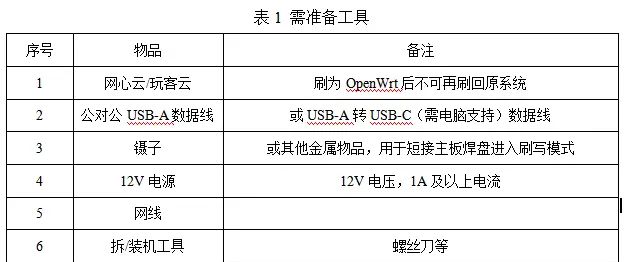简介
深度学习技术正以惊人的速度重塑各个行业,从医疗影像分析到工业视觉检测,从自然语言处理到智能推荐系统,深度学习算法的应用场景日益广泛。本文将全面解析深度学习领域十大核心算法,包括它们的数学原理、应用场景和企业级开发实战,并提供详细的PyTorch代码实现。通过从零到一的开发步骤,帮助您掌握深度学习技术的精髓,提升实际项目开发能力。文章内容将深入浅出,既有理论基础,又有实践指导,助您成为深度学习领域的实战专家。
一、深度学习基础概念与数学原理
1.1 神经网络基本结构
深度学习是机器学习的一个子领域,专注于构建和训练深度神经网络。神经网络由神经元、连接和激活函数组成,通过多层结构处理复杂的数据模式。神经网络的基本单位是神经元,它接收输入信号,进行加权求和,然后通过激活函数产生输出。神经元之间的连接权重决定了输入对输出的影响程度。
在PyTorch中,我们可以使用torch.nn.Module创建一个简单的神经元:
import torch
import torch.nn as nn
class Neuron(nn.Module):
def __init__(self, input_dim):
super().__init__()
self.linear = nn.Linear(input_dim, 1)
self.activation = nn.Sigmoid()
def forward(self, x):
return self.activation(self.linear(x))
# 使用示例
neuron = Neuron(3)
output = neuron(torch.tensor([0.5, -1.2, 0.8]))
print(output) # 输出:tensor([0.5997])
1.2 激活函数详解
激活函数是神经网络中的关键组件,它为神经元引入非线性特性,使网络能够学习复杂的数据模式。常用的激活函数包括:
Sigmoid函数:将输入映射到0-1之间,常用于二分类问题的输出层。
ReLU函数:当输入大于0时输出输入值,否则输出0,有效缓解梯度消失问题。
Tanh函数:将输入映射到-1到1之间,增强中心对称性。
Softmax函数:将输入转换为概率分布,常用于多分类问题的输出层。
# 各种激活函数的实现
x = torch.tensor([-2.0, -1.0, 0.0, 1.0, 2.0])
# Sigmoid
sigmoid = nn.Sigmoid()
print("Sigmoid:", sigmoid(x)) # 输出:tensor([0.1192, 0.2689, 0.5000, 0.7311, 0.8808])
# ReLU
relu = nn.ReLU()
print("ReLU:", relu(x)) # 输出:tensor([0., 0., 0., 1., 2.])
# Tanh
tanh = nn.Tanh()
print("Tanh:", tanh(x)) # 输出:tensor([-0.9640, -0.7616, 0.0000, 0.7616, 0.9640])
# Softmax
softmax = nn.Softmax(dim=0)
print("Softmax:", softmax(x)) # 输出:tensor([0.0117, 0.0321, 0.0891, 0.2369, 0.6301])
1.3 反向传播与梯度下降
反向传播算法是训练深度神经网络的核心,它通过链式法则计算损失函数对网络参数的梯度,然后使用梯度下降等优化算法更新参数,使模型能够学习数据中的模式。反向传播过程包括前向传播、损失计算、反向传播和参数更新四个步骤。
# 反向传播与梯度下降的简单示例
x = torch.randn(10, 3) # 输入数据
y = torch.randn(10, 1) # 真实标签
# 定义简单模型
model = nn.Linear(3, 1)
optimizer = torch.optim.SGD(model.parameters(), lr=0.01)
# 训练循环
for epoch in range(1000):
# 前向传播
y_pred = model(x)
# 计算损失
loss = nn.MSELoss()(y_pred, y)
# 反向传播
optimizer.zero_grad()
loss.backward()
# 参数更新
optimizer.step()
if epoch % 100 == 0:
print(f"Epoch {
epoch}, Loss: {
loss.item():.4f}")
二、深度神经网络(DNN)与多层感知机(MLP)
2.1 DNN架构与实现
深度神经网络(DNN)是深度学习的基础模型,它由多个全连接层组成,通过非线性激活函数逐层提取数据特征。DNN适用于各种监督学习任务,如分类和回归。在PyTorch中,我们可以使用nn.Sequential轻松构建DNN。
# 构建一个简单的深度神经网络
class SimpleDNN(nn.Module):
def __init__(self, input_dim, hidden_dim, output_dim):
super().__init__()
self.layers = nn.Sequential(
nn.Linear(input_dim, hidden_dim),
nn.ReLU(),
nn.Linear(hidden_dim, hidden_dim),
nn.ReLU(),
nn.Linear(hidden_dim, output_dim)
)
def forward(self, x):
return self.layers(x)
# 使用示例
model = SimpleDNN(input_dim=784, hidden_dim=256, output_dim=10)
input_data = torch.randn(1, 784)
output = model(input_data)
print(output.shape) # 输出:torch.Size([1, 10])
2.2 DNN在企业级应用中的优势
深度神经网络在企业级应用中具有显著优势,特别是在处理高维数据和复杂模式识别任务时。DNN能够自动从数据中提取特征,减少人工特征工程的需求,提高模型的泛化能力。此外,DNN还可以通过调整网络结构和参数来适应不同的业务场景和需求。
企业级应用案例:在金融风控领域,DNN可以用于欺诈检测,通过分析交易数据中的模式,识别异常交易行为。在电商推荐系统中,DNN可以学习用户行为和商品特征,提供个性化的推荐服务。
三、卷积神经网络(CNN)与图像处理
3.1 CNN核心概念与原理
卷积神经网络(CNN)是专为处理图像和空间数据设计的深度学习模型。CNN的核心是卷积层、池化层和全连接层的组合。卷积层通过滑动卷积核提取局部特征,池化层则对特征进行降维和抽象化,全连接层负责最终的分类或回归任务。
# 构建一个基础CNN模型
class BasicCNN(nn.Module):
def __init__(self, num_classes=10):
super().__init__()
self.conv1 = nn.Conv2d(3, 32, kernel_size=3, padding=1)
self.conv2 = nn.Conv2d(32, 64, kernel_size=3, padding=1)
self池化 = nn.MaxPool2d(2, 2)
self.fc1 = nn.Linear(64 * 8 * 8, 128)
self.fc2 = nn.Linear(128, num_classes)
def forward(self, x):
x = self.池化(F.relu(self.conv1(x))) # 输出尺寸:32x16x16
x = self.池化(F.relu(self.conv2(x))) # 输出尺寸:64x8x8
x = x.view(-1, 64 * 8 * 8)
x = F.relu(self.fc1(x))
x = self.fc2(x)
return x
3.2 CNN在医疗影像分析中的应用
在医疗领域,CNN被广泛应用于医学影像分析,如X光片、CT扫描和MRI图像的分类、分割和检测。这些应用可以帮助医生更准确地诊断疾病,提高诊断效率。
企业级案例:华为诺亚方舟实验室发布的GhostNetV3架构通过重参数化和知识蒸馏技术,在保持高精度的同时大幅减少计算资源消耗,特别适合医疗影像分析等资源受限场景。
# 医疗影像分类模型(基于GhostNetV3)
import timm
# 加载预训练的GhostNetV3模型
model = timm.create_model('ghostnetv3_100', num_classes=2).cuda()
# 使用torch.compile加速训练
加速模型 = torch.compile(model, backend="inductor")
# 训练配置
optimizer = torch.optim.AdamW(加速模型.parameters(), lr=1e-3)
loss_fn = nn.CrossEntropyLoss()
# 训练循环
for epoch in range(100):
for images, labels in train_loader:
images, labels = images.cuda(), labels.cuda()
# 前向传播
outputs = 加速模型(images)
# 计算损失
loss = loss_fn(outputs, labels)
# 反向传播和参数更新
optimizer.zero_grad()
loss.backward()
optimizer.step()
# 评估模型
model.eval()
with torch.no_grad():
total, correct = 0, 0
for images, labels in val_loader:
images, labels = images.cuda(), labels.cuda()
outputs = model(images)
_, predicted = torch.max(outputs.data, 1)
total += labels.size(0)
correct += (predicted == labels).sum().item()
print(f"Epoch {
epoch}, Validation Accuracy: {
100 * correct / total:.2f}%")
3.3 CNN在工业视觉检测中的实战
在工业领域,CNN可用于产品质量检测、缺陷识别和自动化控制。通过训练CNN模型识别产品图像中的缺陷,可以实现高效的生产线质量控制。
# 工业视觉缺陷检测模型
import torch
import torch.nn as nn
class DefectDetector(nn.Module):
def __init__(self):
super().__init__()
self.conv1 = nn.Conv2d(3, 16, 3, padding=1)
self.conv2 = nn.Conv2d(16, 32, 3, padding=1)
self.conv3 = nn.Conv2d(32, 64, 3, padding=1)
self池化 = nn.MaxPool2d(2, 2)
self.fc1 = nn.Linear(64 * 8 * 8, 128)
self.fc2 = nn.Linear(128, 2)
def forward(self, x):
x = self.池化(F.relu(self.conv1(x))) # 16x16x16
x = self.池化(F.relu(self.conv2(x))) # 32x8x8
x = self.池化(F.relu(self.conv3(x))) # 64x4x4
x = x.view(-1, 64 * 4 * 4)
x = F.relu(self.fc1(x))
x = self.fc2(x)
return x
# 模型量化与部署
import torch.quantization
# 训练模型
model = DefectDetector().cuda()
# ... 训练过程 ...
# 量化感知训练(QAT)
量化模型 = torch.quantization quantize_qat(model, qconfig = default_qconfig)
# ... 继续训练量化模型 ...
# 转换为量化模型
量化模型 = torch.quantization convert(量化模型)
# 边缘设备部署
torch.jit script(量化模型).save("defect_detector quantized.pt")
四、循环神经网络(RNN)与序列数据处理
4.1 RNN基本结构与原理
循环神经网络(RNN)是一种具有记忆能力的神经网络,能够处理序列数据。它通过在网络中引入循环连接,实现对序列信息的建模和预测。RNN的核心是隐藏状态,它将前一时刻的信息传递到当前时刻,从而捕捉序列中的时序依赖关系。
# 实现一个简单的RNN单元
class SimpleRNN(nn.Module):
def __init__(self, input_size, hidden_size, output_size):
super().__init__()
self隐藏层 = nn.Linear(input_size + hidden_size, hidden_size)
self输出层 = nn.Linear(hidden_size, output_size)
def forward(self, x, hidden=None):
# x: [batch_size, seq_len, input_size]
# hidden: [batch_size, hidden_size]
outputs = []
for i in range(x.size(1)):
# 将当前输入与隐藏状态拼接
current_input = torch.cat([x[:, i, :], hidden], dim=1) if hidden is not None else x[:, i, :]
# 更新隐藏状态
hidden = torch.relu(self.隐藏层(current_input))
# 计算输出
output = self.输出层(hidden)
outputs.append(output)
return torch.stack(outputs, dim=1), hidden
# 使用示例
batch_size = 2
seq_len = 5
input_size = 3
hidden_size = 4
output_size = 2
x = torch.randn(batch_size, seq_len, input_size)
model = SimpleRNN(input_size, hidden_size, output_size)
outputs, _ = model(x)
print(outputs.shape) # 输出:torch.Size([2, 5, 2])
4.2 长短时记忆网络(LSTM)与梯度问题
LSTM是RNN的一种变体,通过引入门控机制(输入门、遗忘门和输出门)解决了传统RNN中的梯度消失和梯度爆炸问题。LSTM能够更好地捕捉长序列数据中的依赖关系,适用于自然语言处理、语音识别等任务。
# 实现一个LSTM单元
class SimpleLSTM(nn.Module):
def __init__(self, input_size, hidden_size, output_size):
super().__init__()
self.lstm = nn.LSTMCell(input_size, hidden_size)
self.fc = nn.Linear(hidden_size, output_size)
def forward(self, x, hidden=None):
# x: [batch_size, seq_len, input_size]
# hidden: (h_n, c_n), 其中h_n和c_n的尺寸都是[batch_size, hidden_size]
outputs = []
for i in range(x.size(1)):
# 更新隐藏状态
hidden = self.lstm(x[:, i, :], hidden) if hidden is not None else self.lstm(x[:, i, :])
# 计算输出
output = self.fc(hidden[0])
outputs.append(output)
return torch.stack(outputs, dim=1), hidden
# 使用示例
batch_size = 2
seq_len = 5
input_size = 3
hidden_size = 4
output_size = 2
x = torch.randn(batch_size, seq_len, input_size)
model = SimpleLSTM(input_size, hidden_size, output_size)
outputs, _ = model(x)
print(outputs.shape) # 输出:torch.Size([2, 5, 2])
4.3 门控循环单元(GRU)与简化设计
门控循环单元(GRU)是LSTM的简化版本,它通过两个门控(重置门和更新门)来控制信息流,减少了参数数量,同时保持了处理长序列数据的能力。GRU在自然语言处理任务中表现出色。
# 实现一个GRU单元
class SimpleGRU(nn.Module):
def __init__(self, input_size, hidden_size, output_size):
super().__init__()
self.gru = nn.GRUCell(input_size, hidden_size)
self.fc = nn.Linear(hidden_size, output_size)
def forward(self, x, hidden=None):
# x: [batch_size, seq_len, input_size]
# hidden: [batch_size, hidden_size]
outputs = []
for i in range(x.size(1)):
# 更新隐藏状态
hidden = self.gru(x[:, i, :], hidden) if hidden is not None else self.gru(x[:, i, :])
# 计算输出
output = self.fc(hidden)
outputs.append(output)
return torch.stack(outputs, dim=1), hidden
# 使用示例
batch_size = 2
seq_len = 5
input_size = 3
hidden_size = 4
output_size = 2
x = torch.randn(batch_size, seq_len, input_size)
model = SimpleGRU(input_size, hidden_size, output_size)
outputs, _ = model(x)
print(outputs.shape) # 输出:torch.Size([2, 5, 2])
3.4 反向传播优化与企业级应用
在企业级应用中,CNN模型的训练和推理速度至关重要。PyTorch 2.0的torch.compile可以显著加速模型训练和推理,特别是在GPU上运行时。
# 使用PyTorch 2.0的torch.compile加速CNN
import torch
import timm
# 加载预训练的CNN模型
model = timm.create_model('resnet50', num_classes=2).cuda()
# 使用torch.compile加速模型
加速模型 = torch.compile(model, backend="inductor")
# 训练配置
optimizer = torch.optim.AdamW(加速模型.parameters(), lr=1e-3)
loss_fn = nn.CrossEntropyLoss()
# 训练循环
for epoch in range(100):
for images, labels in train_loader:
images, labels = images.cuda(), labels.cuda()
# 前向传播
outputs = 加速模型(images)
# 计算损失
loss = loss_fn(outputs, labels)
# 反向传播和参数更新
optimizer.zero_grad()
loss.backward()
optimizer.step()
# 评估模型
model.eval()
with torch.no_grad():
total, correct = 0, 0
for images, labels in val_loader:
images, labels = images.cuda(), labels.cuda()
outputs = model(images)
_, predicted = torch.max(outputs.data, 1)
total += labels.size(0)
correct += (predicted == labels).sum().item()
print(f"Epoch {
epoch}, Validation Accuracy: {
100 * correct / total:.2f}%")
五、生成对抗网络(GAN)与图像生成
5.1 GAN基本架构与对抗训练
生成对抗网络(GAN)由生成器和判别器两个网络组成,通过博弈的方式进行训练。生成器尝试生成逼真的样本,而判别器则尝试区分真实样本和生成样本。这种对抗训练使生成器能够学习数据的分布并生成高质量的样本。
# 实现一个简单的GAN
import torch
import torch.nn as nn
# 生成器网络
class Generator(nn.Module):
def __init__(self, latent_dim=100, img_dim=784):
super().__init__()
self.main = nn.Sequential(
nn.Linear(latent_dim, 256),
nn.ReLU(),
nn.Linear(256, 512),
nn.ReLU(),
nn.Linear(512, img_dim),
nn.Tanh()
)
def forward(self, x):
return self.main(x)
# 判别器网络
class Discriminator(nn.Module):
def __init__(self, img_dim=784):
super().__init__()
self.main = nn.Sequential(
nn.Linear(img_dim, 512),
nn.ReLU(),
nn.Linear(512, 256),
nn.ReLU(),
nn.Linear(256, 1),
nn.Sigmoid()
)
def forward(self, x):
return self.main(x)
# GAN训练循环
def train_gan(生成器, 判别器, train_loader, num_epochs=100):
# 定义优化器和损失函数
optimizer_G = torch.optim.Adam(生成器.parameters(), lr=0.0002)
optimizer_D = torch.optim.Adam(判别器.parameters(), lr=0.0002)
loss_fn = nn.BCELoss()
for epoch in range(num_epochs):
for real_images, _ in train_loader:
batch_size = real_images.size(0)
real_images = real_images.view(batch_size, -1).cuda()
# 训练判别器
# 真实图像
real_labels = torch.ones(batch_size, 1).cuda()
d_output_real = 判别器(real_images)
d_loss_real = loss_fn(d_output_real, real_labels)
# 生成图像
latent = torch.randn(batch_size, 100).cuda()
fake_images = 生成器(latent)
fake_labels = torch.zeros(batch_size, 1).cuda()
d_output_fake = 判别器(fake_images)
d_loss_fake = loss_fn(d_output_fake, fake_labels)
# 总损失
d_loss = d_loss_real + d_loss_fake
# 反向传播和参数更新
optimizer_D.zero_grad()
d_loss.backward()
optimizer_D.step()
# 训练生成器
# 生成图像并让判别器认为是真实的
latent = torch.randn(batch_size, 100).cuda()
fake_images = 生成器(latent)
real_labels = torch.ones(batch_size, 1).cuda()
g_output = 判别器(fake_images)
g_loss = loss_fn(g_output, real_labels)
# 反向传播和参数更新
optimizer_G.zero_grad()
g_loss.backward()
optimizer_G.step()
if epoch % 10 == 0:
print(f"Epoch {
epoch}, Discriminator Loss: {
d_loss.item():.4f}, Generator Loss: {
g_loss.item():.4f}")
# 生成示例图像
with torch.no_grad():
latent = torch.randn(1, 100).cuda()
fake_image = 生成器(latent).view(1, 28, 28)
plt.imshow(fake_image.cpu().numpy()[0], cmap='gray')
plt.title(f"Epoch {
epoch}")
plt.show()
5.2 DCGAN与图像生成实战
深度卷积生成对抗网络(DCGAN)是GAN的改进版本,它使用卷积层代替全连接层,提高了生成图像的质量和训练稳定性。DCGAN广泛应用于图像生成任务,如人脸生成、图像修复和超分辨率重建。
# 实现一个DCGAN
import torch
import torch.nn as nn
# 生成器网络
class DCGANGenerator(nn.Module):
def __init__(self, latent_dim=100, ngf=64, nc=3):
super().__init__()
self.main = nn.Sequential(
# 输入层:100x1x1 -> 64x4x4
nn.ConvTranspose2d(latent_dim, ngf * 8, 4, 1, 0, bias=False),
nn.BatchNorm2d(ngf * 8),
nn.ReLU(True),
# 第一层:64x4x4 -> 64x8x8
nn.ConvTranspose2d(ngf * 8, ngf * 4, 4, 2, 1, bias=False),
nn.BatchNorm2d(ngf * 4),
nn.ReLU(True),
# 第二层:64x8x8 -> 32x16x16
nn.ConvTranspose2d(ngf * 4, ngf * 2, 4, 2, 1, bias=False),
nn.BatchNorm2d(ngf * 2),
nn.ReLU(True),
# 第三层:32x16x16 -> 16x32x32
nn.ConvTranspose2d(ngf * 2, ngf, 4, 2, 1, bias=False),
nn.BatchNorm2d(ngf),
nn.ReLU(True),
# 输出层:16x32x32 -> 3x64x64
nn.ConvTranspose2d(ngf, nc, 4, 2, 1, bias=False),
nn.Tanh()
)
def forward(self, x):
return self.main(x)
# 判别器网络
class DCGANDiscriminator(nn.Module):
def __init__(self, nc=3, ndf=64):
super().__init__()
self.main = nn.Sequential(
# 输入层:3x64x64 -> 16x32x32
nn.Conv2d(nc, ndf, 4, 2, 1, bias=False),
nn LeakyReLU(0.2, inplace=True),
# 第一层:16x32x32 -> 32x16x16
nn.Conv2d(ndf, ndf * 2, 4, 2, 1, bias=False),
nn.BatchNorm2d(ndf * 2),
nn LeakyReLU(0.2, inplace=True),
# 第二层:32x16x16 -> 64x8x8
nn.Conv2d(ndf * 2, ndf * 4, 4, 2, 1, bias=False),
nn.BatchNorm2d(ndf * 4),
nn LeakyReLU(0.2, inplace=True),
# 第三层:64x8x8 -> 128x4x4
nn.Conv2d(ndf * 4, ndf * 8, 4, 2, 1, bias=False),
nn.BatchNorm2d(ndf * 8),
nn LeakyReLU(0.2, inplace=True),
# 输出层:128x4x4 -> 1x1x1
nn.Conv2d(ndf * 8, 1, 4, 1, 0, bias=False),
nn.Sigmoid()
)
def forward(self, x):
return self.main(x)
# DCGAN训练循环
def train_dcgan(生成器, 判别器, train_loader, num_epochs=100):
# 定义优化器和损失函数
optimizer_G = torch.optim.Adam(生成器.parameters(), lr=0.0002, betas=(0.5, 0.999))
optimizer_D = torch.optim.Adam(判别器.parameters(), lr=0.0002, betas=(0.5, 0.999))
loss_fn = nn.BCELoss()
for epoch in range(num_epochs):
for real_images, _ in train_loader:
batch_size = real_images.size(0)
real_images = real_images.cuda()
# 训练判别器
# 真实图像
real_labels = torch.ones(batch_size, 1).cuda()
d_output_real = 判别器(real_images)
d_loss_real = loss_fn(d_output_real, real_labels)
# 生成图像
latent = torch.randn(batch_size, 100, 1, 1).cuda()
fake_images = 生成器(latent)
fake_labels = torch.zeros(batch_size, 1).cuda()
d_output_fake = 判别器(fake_images)
d_loss_fake = loss_fn(d_output_fake, fake_labels)
# 总损失
d_loss = d_loss_real + d_loss_fake
# 反向传播和参数更新
optimizer_D.zero_grad()
d_loss.backward()
optimizer_D.step()
# 训练生成器
# 生成图像并让判别器认为是真实的
latent = torch.randn(batch_size, 100, 1, 1).cuda()
fake_images = 生成器(latent)
real_labels = torch.ones(batch_size, 1).cuda()
g_output = 判别器(fake_images)
g_loss = loss_fn(g_output, real_labels)
# 反向传播和参数更新
optimizer_G.zero_grad()
g_loss.backward()
optimizer_G.step()
if epoch % 10 == 0:
print(f"Epoch {
epoch}, Discriminator Loss: {
d_loss.item():.4f}, Generator Loss: {
g_loss.item():.4f}")
# 生成示例图像
with torch.no_grad():
latent = torch.randn(1, 100, 1, 1).cuda()
fake_image = 生成器(latent)
plt.imshow(fake_image.cpu().numpy()[0].transpose(1, 2, 0), cmap='gray')
plt.title(f"Epoch {
epoch}")
plt.show()
5.3 企业级图像生成应用
在企业级应用中,GAN可用于图像修复、超分辨率重建和数据增强等任务。例如,在医疗影像分析中,GAN可以生成高质量的医学图像,用于训练和增强模型的泛化能力。
企业级案例:华为云论坛提供的扩散模型代码示例,展示了如何使用DDPMScheduler和UNet2DConditionModel进行图像去噪和修复。
# 使用扩散模型进行图像修复
import torch
from diffusers import DDPMScheduler, UNet2DConditionModel
from PIL import Image
import numpy as np
# 加载预训练模型
model = UNet2DConditionModel.from_pretrained("CompVis/ldm-text2im-large-256").cuda()
scheduler = DDPMScheduler.from_pretrained("CompVis/ldm-text2im-large-256").cuda()
# 读取带噪声的图像
image = Image.open("noisy_image.png").convert("RGB")
image = np.array(image) / 255.0 # 归一化到0-1
image = torch.tensor(image).unsqueeze(0).float().cuda()
# 逆扩散过程进行去噪
def denoise_image(noisy_img, model, scheduler, num_steps=1000):
latent = noisy_img # 假设初始潜在空间为噪声图像
for t in range(num_steps-1, -1, -1):
# 将t转换为模型可接受的格式
t_tensor = torch.tensor([t], dtype=torch.float32).cuda()
# 预测当前时间步的噪声
noise_pred = model(latent, t_tensor)
# 更新潜在空间
latent = scheduler.step(noise_pred, t, latent)
return latent
# 去噪图像
denoised_image = denoise_image(image, model, scheduler)
denoised_image_pil = Image.fromarray((denoised_image.squeeze().numpy() * 255).astype(np.uint8))
denoised_image_pil.save("denoised_image.png")
六、自编码器(Autoencoder)与特征学习
6.1 自编码器基本结构与原理
自编码器是一种无监督学习的神经网络,通过学习输入数据的低维表示来实现数据压缩和特征提取。自编码器由编码器和解码器两部分组成,编码器将输入数据映射到低维潜在空间,解码器则尝试从潜在空间重构原始输入数据。
# 实现一个基础自编码器
import torch
import torch.nn as nn
class Autoencoder(nn.Module):
def __init__(self, input_dim=784, latent_dim=32):
super().__init__()
# 编码器
self.encoder = nn.Sequential(
nn.Linear(input_dim, 256),
nn.ReLU(),
nn.Linear(256, 128),
nn.ReLU(),
nn.Linear(128, latent_dim)
)
# 解码器
self.decoder = nn.Sequential(
nn.Linear(latent_dim, 128),
nn.ReLU(),
nn.Linear(128, 256),
nn.ReLU(),
nn.Linear(256, input_dim),
nn.Sigmoid()
)
def forward(self, x):
# 编码
latent = self.encoder(x)
# 解码
reconstructed = self.decoder(latent)
return reconstructed
# 自编码器训练循环
def train_autoencoder(模型, train_loader, num_epochs=100):
# 定义优化器和损失函数
optimizer = torch.optim.Adam(模型.parameters(), lr=0.001)
loss_fn = nn.MSELoss()
for epoch in range(num_epochs):
for images, _ in train_loader:
batch_size = images.size(0)
images = images.view(batch_size, -1).cuda()
# 前向传播
reconstructed = 模型(images)
# 计算损失
loss = loss_fn(reconstructed, images)
# 反向传播和参数更新
optimizer.zero_grad()
loss.backward()
optimizer.step()
if epoch % 10 == 0:
print(f"Epoch {
epoch}, Loss: {
loss.item():.4f}")
# 可视化重构结果
with torch.no_grad():
sample_images = images[:8]
reconstructed_images = 模型(sample_images)
# 显示原始图像和重构图像
fig, axes = plt.subplots(2, 8, figsize=(16, 4))
for i in range(8):
axes[0, i].imshow(sample_images[i].cpu().numpy().reshape(28, 28), cmap='gray')
axes[1, i].imshow(reconstructed_images[i].cpu().numpy().reshape(28, 28), cmap='gray')
axes[0, i].axis('off')
axes[1, i].axis('off')
plt.show()
6.2 变分自编码器(VAE)与概率建模
变分自编码器(VAE)是自编码器的改进版本,它通过引入隐变量和变分推断实现对数据的生成和重构。VAE不仅能够压缩数据,还能够生成新的数据样本,使其在数据生成和特征学习任务中表现出色。
# 实现一个变分自编码器
import torch
import torch.nn as nn
import torch.distributions as dist
class VAE(nn.Module):
def __init__(self, input_dim=784, hidden_dim=400, latent_dim=20):
super().__init__()
# 编码器
self编码器 = nn.Sequential(
nn.Linear(input_dim, hidden_dim),
nn.ReLU()
)
selfmu = nn.Linear(hidden_dim, latent_dim)
selflog_var = nn.Linear(hidden_dim, latent_dim)
# 解码器
self解码器 = nn.Sequential(
nn.Linear(latent_dim, hidden_dim),
nn.ReLU(),
nn.Linear(hidden_dim, input_dim),
nn.Sigmoid()
)
def encode(self, x):
# 编码器前向传播
hidden = self编码器(x)
mu = selfmu(hidden)
log_var = selflog_var(hidden)
return mu, log_var
def reparameterize(self, mu, log_var):
# 重新参数化技巧
std = torch.exp(0.5 * log_var)
eps = torch.randn_like(std)
return mu + eps * std
def decode(self, z):
# 解码器前向传播
return self解码器(z)
def forward(self, x):
# 编码
mu, log_var = self.encode(x)
# 重新参数化
z = self.reparameterize(mu, log_var)
# 解码
reconstructed = self.decode(z)
return reconstructed, mu, log_var
# VAE训练循环
def train_vae(模型, train_loader, num_epochs=100):
# 定义优化器和损失函数
optimizer = torch.optim.Adam(模型.parameters(), lr=0.001)
for epoch in range(num_epochs):
for images, _ in train_loader:
batch_size = images.size(0)
images = images.view(batch_size, -1).cuda()
# 前向传播
reconstructed, mu, log_var = 模型(images)
# 计算重构损失
reconstruction_loss = nn.MSELoss()(reconstructed, images)
# 计算KL散度损失
kl_loss = -0.5 * torch.sum(1 + log_var - mu**2 - log_var.exp())
# 总损失
loss = reconstruction_loss + kl_loss
# 反向传播和参数更新
optimizer.zero_grad()
loss.backward()
optimizer.step()
if epoch % 10 == 0:
print(f"Epoch {
epoch}, Loss: {
loss.item():.4f}")
# 可视化重构结果
with torch.no_grad():
sample_images = images[:8]
reconstructed_images, _, _ = 模型(sample_images)
# 显示原始图像和重构图像
fig, axes = plt.subplots(2, 8, figsize=(16, 4))
for i in range(8):
axes[0, i].imshow(sample_images[i].cpu().numpy().reshape(28, 28), cmap='gray')
axes[1, i].imshow(reconstructed_images[i].cpu().numpy().reshape(28, 28), cmap='gray')
axes[0, i].axis('off')
axes[1, i].axis('off')
plt.show()
6.3 企业级自编码器应用
在企业级应用中,自编码器可用于异常检测、数据降维和特征工程等任务。例如,在金融风控领域,自编码器可以用于检测异常交易模式;在工业领域,自编码器可用于设备故障预测。
企业级案例:自编码器在医疗影像分析中的应用,通过学习正常影像的特征,检测异常影像。
# 医疗影像异常检测自编码器
import torch
import torch.nn as nn
import torch.utils.data as data
import numpy as np
from PIL import Image
# 定义医疗影像数据集
class MedicalDataset(data.Dataset):
def __init__(self, root_dir, transform=None):
self.root_dir = root_dir
self.transform = transform
self images = [f for f in os.listdir(root_dir) if f.endswith('.png')]
def __len__(self):
return len(self images)
def __getitem__(self, idx):
image_path = os.path.join(self.root_dir, self images[idx])
image = Image.open(image_path).convert('RGB')
if self.transform:
image = self.transform(image)
return image
# 定义医疗影像自编码器
class MedicalAutoencoder(nn.Module):
def __init__(self, input_dim=3*256*256, hidden_dim=2048, latent_dim=256):
super().__init__()
# 编码器
self.encoder = nn.Sequential(
nn.Linear(input_dim, hidden_dim),
nn.ReLU(),
nn.Linear(hidden_dim, hidden_dim//2),
nn.ReLU(),
nn.Linear(hidden_dim//2, latent_dim)
)
# 解码器
self.decoder = nn.Sequential(
nn.Linear(latent_dim, hidden_dim//2),
nn.ReLU(),
nn.Linear(hidden_dim//2, hidden_dim),
nn.ReLU(),
nn.Linear(hidden_dim, input_dim),
nn.Sigmoid()
)
def forward(self, x):
# 编码
latent = self.encoder(x)
# 解码
reconstructed = self.decoder(latent)
return reconstructed
# 训练医疗影像自编码器
def train_medical_vae(模型, train_loader, num_epochs=100):
# 定义优化器和损失函数
optimizer = torch.optim.Adam(模型.parameters(), lr=0.001)
loss_fn = nn.MSELoss()
for epoch in range(num_epochs):
for images, _ in train_loader:
batch_size = images.size(0)
images = images.view(batch_size, -1).cuda()
# 前向传播
reconstructed = 模型(images)
# 计算损失
loss = loss_fn(re reconstructed, images)
# 反向传播和参数更新
optimizer.zero_grad()
loss.backward()
optimizer.step()
if epoch % 10 == 0:
print(f"Epoch {
epoch}, Loss: {
loss.item():.4f}")
# 可视化重构结果
with torch.no_grad():
sample_images = images[:8]
reconstructed_images = 模型(sample_images)
# 显示原始图像和重构图像
fig, axes = plt.subplots(2, 8, figsize=(16, 4))
for i in range(8):
axes[0, i].imshow(sample_images[i].cpu().numpy().reshape(3, 256, 256).transpose(1, 2, 0), cmap='gray')
axes[1, i].imshow(re reconstructed_images[i].cpu().numpy().reshape(3, 256, 256).transpose(1, 2, 0), cmap='gray')
axes[0, i].axis('off')
axes[1, i].axis('off')
plt.show()

























暂无评论内容